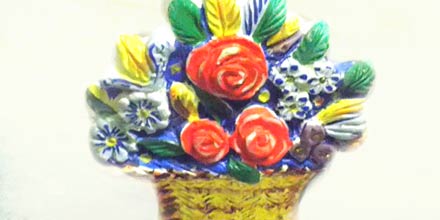Caltagirone whistles

The whistle is the oldest sound toy in the world. The Caltagirone terracotta whistle contains art, history and ancient traditions.
The period of maximum diffusion of Caltagirone whistles was between the end of the nineteenth century and the beginning of the twentieth century, or before the advent of plastic. In Caltagirone, whistles were the only toys that the poorest children possessed and were donated on feast days, almost always as spring and Easter approached. On the occasion of the patronal feasts, children were allowed to play their own whistles.
The sound emitted by the whistle imitates the singing of birds or the hiss of snakes at the arrival of the good season and therefore has always assumed the role of dispenser of good fortune by warding off bad luck.
In Sicily the humble clay whistles were created by pasturari, ie artisans so called because they specialized in the realization of the "pasturi", or "shepherds", of the crib. Normally the same molds were used and the activities were confused, the shepherds of the crib had the same features as the whistles: the same subject was found at Easter in the whistle and at Christmas, without a whistle, as a character in the crib. Once the whistles were cold decorated, with colors made by the same craftsmen. Colors such as manganese green or particular types of stone with iron oxide were used to find red. They were all dangerous substances which of course are no longer used today. The greatest difficulty in making a whistle was not giving it a shape but being able to make it sound. A certain skill is needed and still is needed to find the right angles in the clay, which are excavated with a particular piece of wood. however linked to the religious tradition. In Caltagirone the terracotta whistles of San Giacomo, patron saint of the city, and of the risen Jesus, a whistle linked to the Easter holidays, were widespread. Among the subjects created there are also caricatured figures, which can be the lady of the beautiful world, or the massarotto, that is the one who supervised the work of the workers and acted as an intermediary with the master, usually a nobleman.
Traditionally, the whistle it cheered up a day of celebration but it was also a joyful reminder to dedicate to one's love. A typical Caltagirone whistle is in fact the "ruscignolu", that is the nightingale's whistle which, attached to a small jar filled with water, emitted a sound similar to the song of a bird. These particular whistles were given by boyfriends to girlfriends as a symbol of fertility.